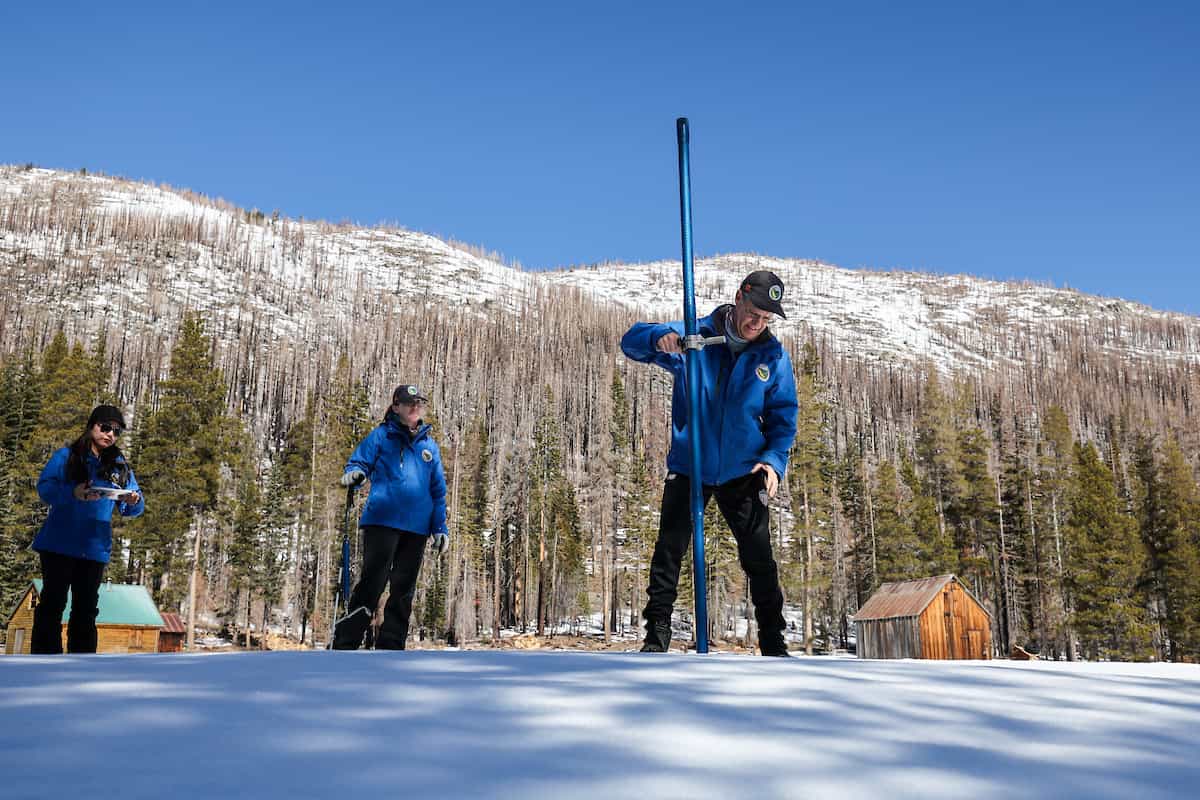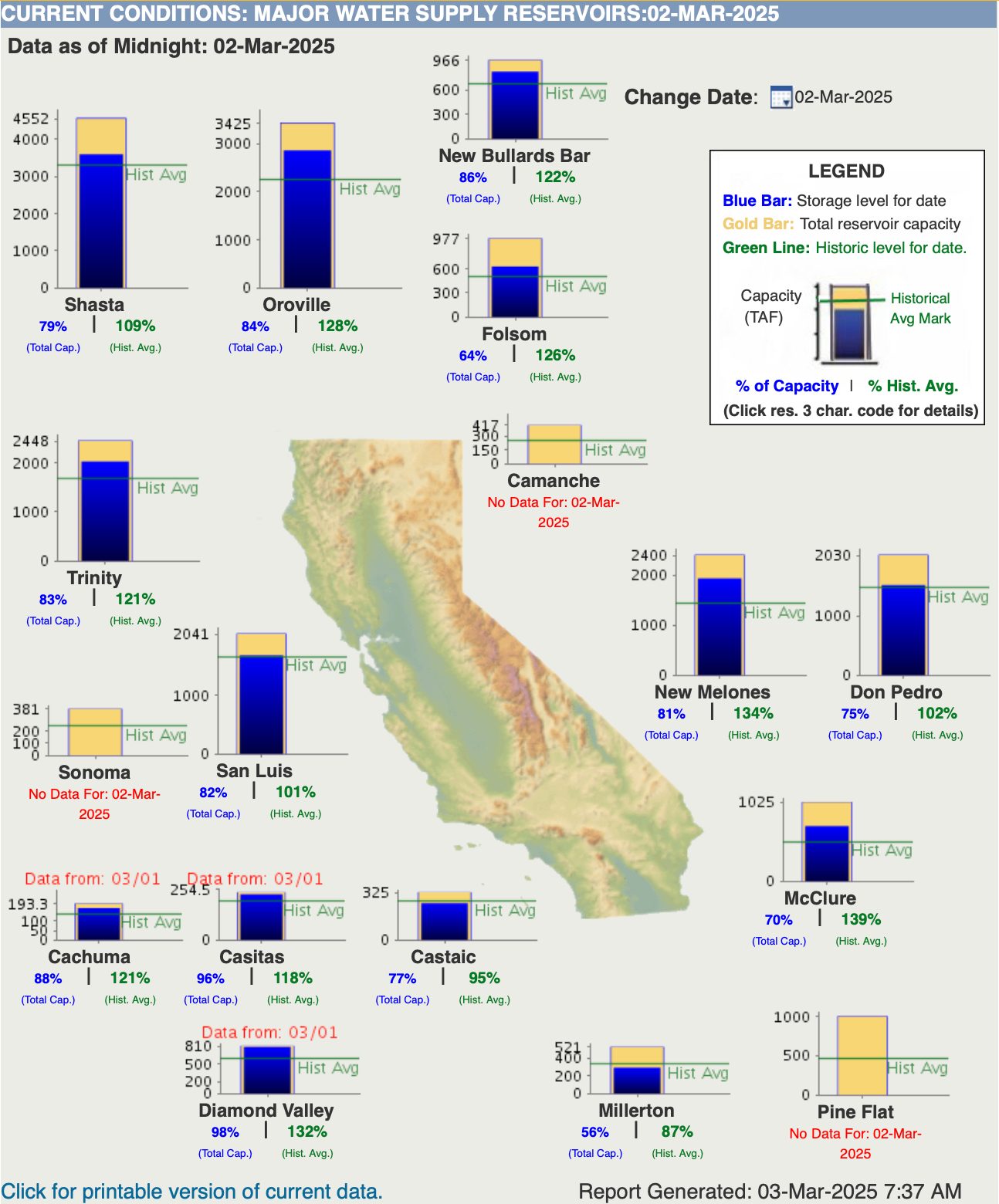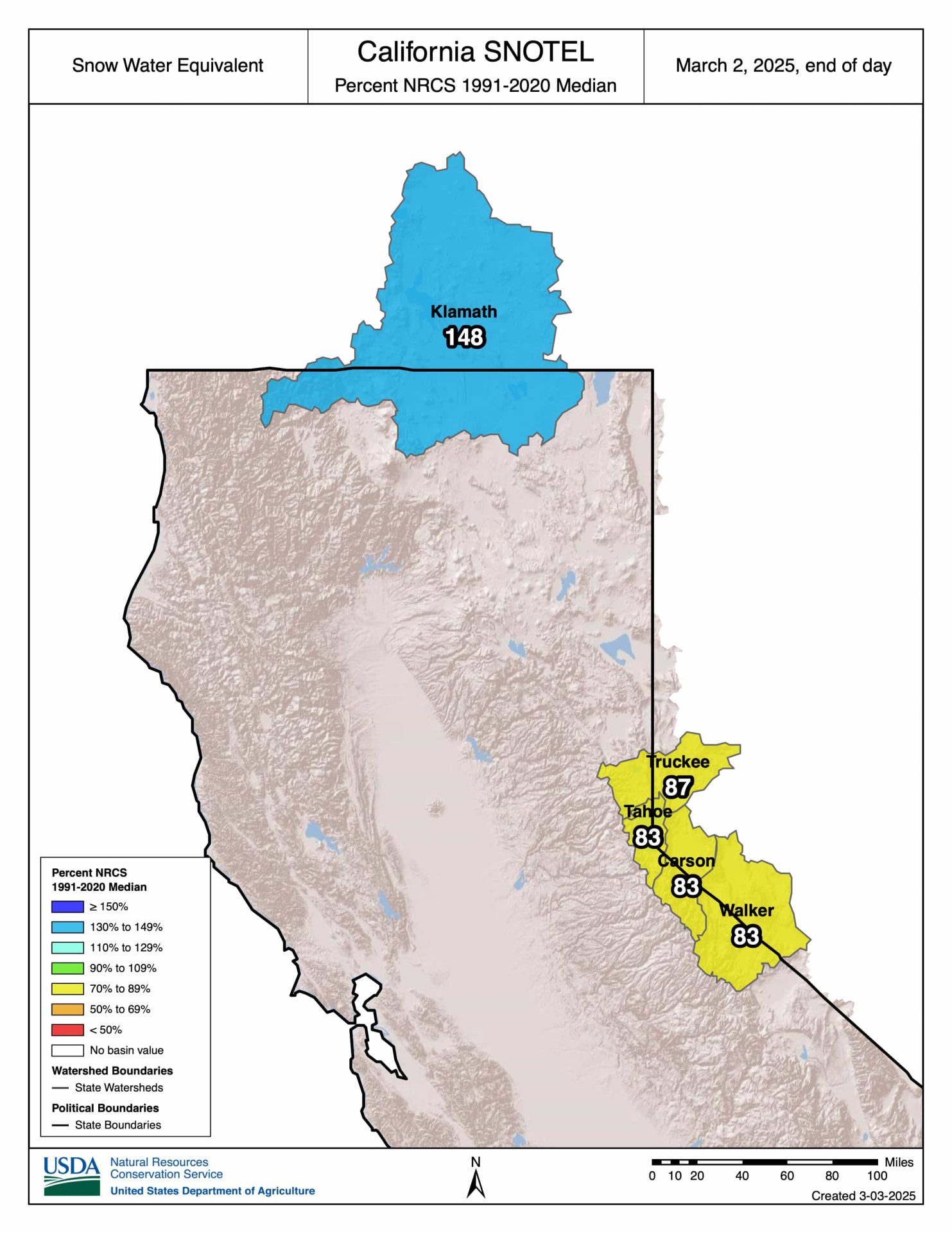
While Recent Storms Brought Statewide Snowpack Closer to Average, Dry Conditions Returned in Late February
SACRAMENTO, California – The Department of Water Resources (DWR) conducted the third snow survey of the season at Phillips Station on Friday, February 28. The manual survey recorded 34 inches of snow depth and a snow water equivalent of 13.5 inches, 58 percent of average for this location. The snow water equivalent measures the amount of water in the snowpack and is a key component of DWR’s water supply forecast. Statewide, the snowpack is 85 percent of average for this date.
A series of extremes have marked this winter, as unseasonably dry and warm conditions have been interrupted by powerful storms that temporarily boosted the snowpack to near normal. That was certainly the case in February, where multiple rounds of atmospheric rivers earlier in the month brought the statewide snowpack to near average only to have dry conditions return. Following the storms in the middle of February, the statewide snowpack was 97 percent of average and has since fallen to 85 percent. For every day that it’s not snowing, the averages will continue to drop.
DWR’s electronic readings from 130 stations in the Sierra Nevada indicate that the statewide snowpack’s snow water equivalent is 19.2 inches, or 74 percent of the critical April 1 average, when the snowpack usually peaks. While forecasts show storm activity may pick up in March, there is no guarantee it will be enough for the snowpack to catch back up to average by April 1. California has seen several years in recent history with large early season snow totals, only for predominantly dry conditions to dominate the rest of the season. Southern Sierra Nevada has especially fallen behind this season, with the region’s snowpack falling just 70 percent on average.
“In addition to the large swings in snowpack conditions we’ve seen this year, a big regional disparity remains between the Northern, Central, and Southern Sierra Nevada. With so many of this season’s storms missing the southern half of the state, our statewide snowpack average can mask just how below average some regions are. Water managers will need to consider not just the extreme swings through the winter and spring months, but also the big differences from watershed to watershed,” said Andy Reising, manager of DWR’s Snow Surveys and Water Supply Forecasting Unit.

Measuring California’s snowpack is a key component of managing its water supplies. The data and measurements collected help inform water supply and snowmelt runoff forecasts, known as Bulletin 120. These forecasts help water managers plan for how much water will eventually reach state reservoirs in the spring and summer. This information is also key in calculating State Water Project allocation updates each month.
On average, California’s snowpack supplies about 30 percent of the state’s water needs. Its natural ability to store water is why the snowpack is often referred to as California’s “frozen reservoir.” Data from these snow surveys and forecasts produced by DWR’s Snow Surveys and Water Supply Forecasting Unit are important factors in determining how DWR and other agencies manage the state’s water resources.
Thanks to efforts to capture as much water as possible from the storms we receive, reservoirs across the state are currently at 118 percent of average.
DWR conducts four or five media-oriented snow surveys at Phillips Station each winter near the first of each month, January through April and, if necessary, May. The next survey is tentatively scheduled for April 2.
For California’s current hydrological conditions, visit https://cww.water.ca.gov.
